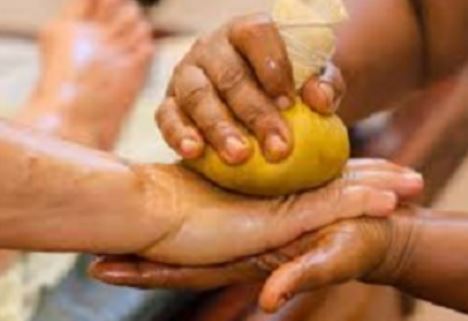A literature review of Amavata & its management through Ayurveda
DOI:
https://doi.org/10.21760/jaims.9.7.26Keywords:
Amavata, Ama, Langhan, Swedan, Virechan, BastiAbstract
In the present era Amavata is the most common disease affecting a large aged population. Amavata term derived from words as “Ama” & “Vata”. The word Ama is the condition in which various ailments in system creates toxic effect. Amavata is a disease caused due to the vitiation or aggravation of Vayu associated with Ama. Vitiated Vayu circulates the Ama all over the body through Dhamanies, takes shelter in the Shleshma Sthana (Amashaya, Sandhi, etc.), producing symptoms such as stiffness, swelling, and tenderness in small and big joints, making a person lame. The symptoms of Amavata are identical to rheumatism, which include rheumatoid arthritis and rheumatic fever. Amavata is one of the challenging disease for the clinicians due to its chronicity, incurability, complications and morbidity. The allopathic treatment provides the symptomatic relief but the underlined pathology remain untreated due to absence of effective therapy and also giving rise to many side effects, toxic symptoms and adverse reactions also more serious complications like organic lesions. The treatment procedure described are Langhan, Swedan, Tikta-Katu Deepan, Virechan, Basti etc. So, the present study deals with systemic review of Amavata from all the classics of Ayurveda and its management.
Downloads
References
Madhava Nidanam With Madhukosha Sanskrit Commentary and Vidyotini Hindi Commentary. Varanasi: Chaukhambha Sanskrit Sansthan; 1988. P. 462. Part I.
Kaviraj Shri Shaligramaji Vaisya, Vangasena, Edited by Shri Vaidya Shankarlalaji Jain. Bombay: Khemraj Shreekrishnadas Prakasan; 1996. P. 399-410.
Sir Stanley Davidson, Edited by Niholas A. Boon, Nicki R. College, Brian R. Walker Davidsons Principles & Practice of Medicine. 20th Edition. London: Churchill Livingstone; 2006. P. 1101-1106.
Shri Chakrapani Datta Virchit Ckakradatta Padarthabodhini Hindi Vyakhya Sahita By Ravi DattaShastri
Bhaisajya Ratnavali-13th Edition.Varanasi: Chaukhamba Sanskrit Samsthana; 1999. P. 447.
Astanga Hridaya Sutra Sthana chapter 13/25, Vidhyotini Hindi commentary by Kaviraj Atrideva gupta revised by Vaidhya Yadunandana Upadhyaya published by Chaukhambha Sanskrit series, 2012; 132.
Madhav nidana commented by Vijaya rakshita & Shrikantha Datta, Madhukosh tika by Madhavkara chapter 25, Amavata nidana, 508/2009.
Chakradutta with Ratnaprabha commentary edited by Priyavat Sharma, Swami Jayaram das, Prakashana Jaipur, Reprint, Amavata, 2000; chi.25/1: 423.
Astanga Sangraha Sutra sthana 9/25, Saroj Hindi commentary by Ravidatt Tripathi Chowkhamba Prakashana Varanasi, 2006; 192.
Vangsena, Vangsena Samhita (Chiktsa Sar Sangrah), Amavata Rogadhikara Adhyaya, 27/5. Edited by Dr. Rajiv Kumar Rai and Dr. Ram Kumar Rai, Choukhambha Sankrit series office, Prachya Prakash Varanasi, first edition, 1983; 321.
Agnivesha, Charaka Samhita, Chikitsa Sthana, Vatavyadhi chikitsa, Adhyaya, 28/19. Edited by Vaidya Jadavji Trikamji Acharaya, Chaukhambha Prakashan; Reprint, 2007; 617.















